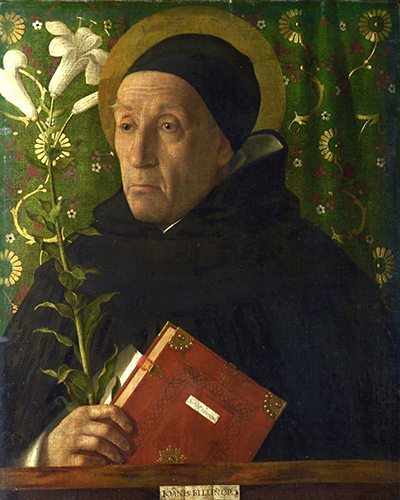The portrait of the Teodoro Da Urbino is oil on canvas painting of 1515 by Giovanni Bellini. The painting is symbolic, as if it emphasises his piety, and shows a friar with both a lily and book, whose right-hand side is the name of St. Dominic.
Many of his friends and relatives influenced his work, but Giovanni had a quality in his work that makes him unique. He combined the styles of his father - and brother-in-law, Andrea Mantegna, with this own subtle of colours and light. The scapular and the cap provide a practical visual aim of the Portrait of Brother Teodoro Da Urbino.
They surround the face and help to project it as a subject of the greatest visual interest of the viewer. Painted truly is the lily, but he inclines the motif behind the curtain, leaving it tilted for us to think it is decorative rather than symbolic, so it slightly reduces its sacred aura. The fresh, shiny blue on the governor’s back has its own stagnation, but the effect is to make it look like an empire but just a little distant.
Giovanni Bellini used oil painting techniques to make portraits of Brother Teodoro Da Urbino. An oil-based paint was mixing a colour pigment with an oily medium. He used traditional wooden pallets to hold and mix small amounts of paint during his work. We can now locate the portrait of the Brother Teodoro Da Urbino in the Victoria and Albert Museum where it is on a long-term loan from the National Gallery of London, who today own the painting.
Veteran painters, including his father Jacob and his brother Gentiles inspired Giovanni Bellini. His brother-in-law was another great painter, Andrea Mantegna. Bellini has also gathered admirers during his longevity. The visit of Antonello da Messina to Venice in 1475-1436 may have influenced him, as well as The blood of the Redeemer and not to forget Anxiety in the garden A German painter, Albrecht Dürer, not only praised Bellini’s skills but also his goodwill.




